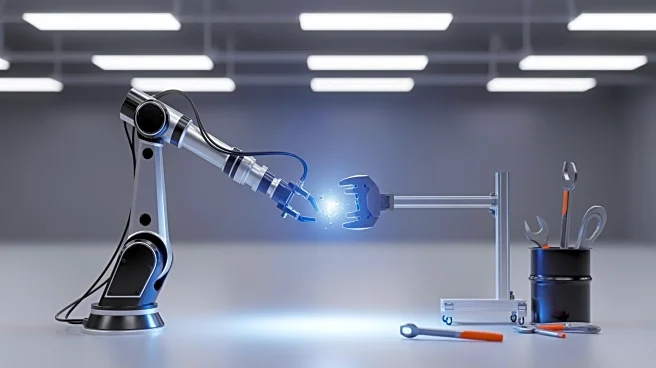What's Happening?
Organizations are increasingly adopting workforce intelligence by integrating unified communications (UC) and task platforms to gain a comprehensive view of work processes. This approach allows leaders
to measure impact rather than just output, optimizing hybrid work environments. By connecting communication, task, and workplace data, companies can improve employee experience, productivity, and reduce costs. For example, the Alberta Energy Regulator saved over $15 million by reducing its office footprint using connected collaboration and workplace analytics. Workforce intelligence involves analyzing roles, tasks, skills, and workplace data to create a living model of how hybrid teams operate, turning collaboration data into measurable impact.
Why It's Important?
The integration of UC and task platforms into workforce intelligence is crucial for businesses aiming to optimize hybrid work environments. It allows companies to measure productivity and efficiency more accurately, leading to better decision-making and resource allocation. This approach can significantly reduce operational costs and improve employee satisfaction by identifying and eliminating redundant tasks and meetings. As businesses continue to invest in collaboration software and analytics, workforce intelligence provides the evidence needed to justify these investments and demonstrate tangible improvements in performance and ROI.
What's Next?
Organizations are expected to continue integrating workforce intelligence into their operations, focusing on connecting existing tools rather than adding new ones. This will involve leveraging AI models to correlate communication, task, and space data, surfacing patterns that can inform decision-making and improve efficiency. Companies will likely explore further automation to streamline processes, such as auto-creating tasks from meetings and recommending asynchronous updates for recurring meetings. As workforce intelligence matures, it will evolve into a 'Work Operating System' that learns from interactions and fine-tunes team performance.
Beyond the Headlines
The adoption of workforce intelligence raises ethical considerations regarding data transparency and privacy. Companies must ensure that data is used responsibly, capturing metadata rather than message content, and providing employees with visibility into how their data is utilized. AI assistants should be opt-in, with clear retention limits, and periodic bias and accuracy checks should be conducted. The goal is to achieve trustworthy automation that respects privacy while driving results.











